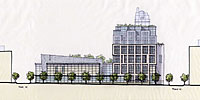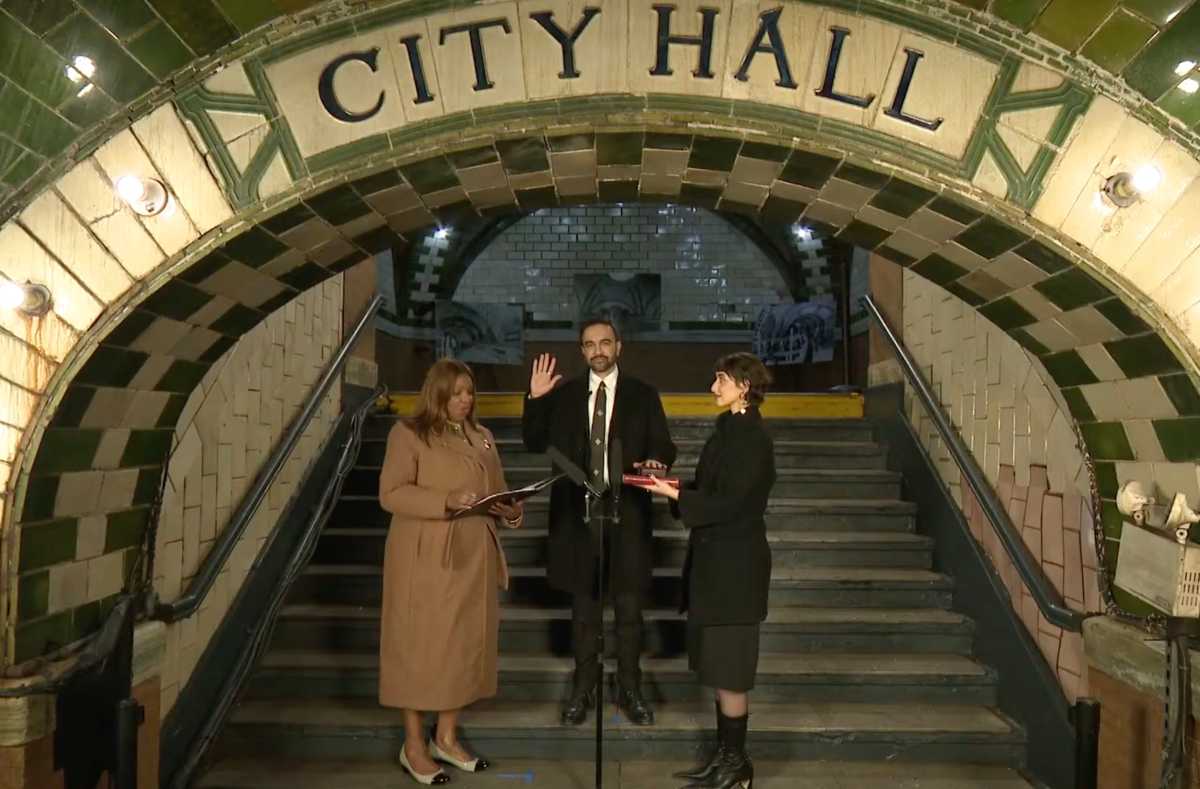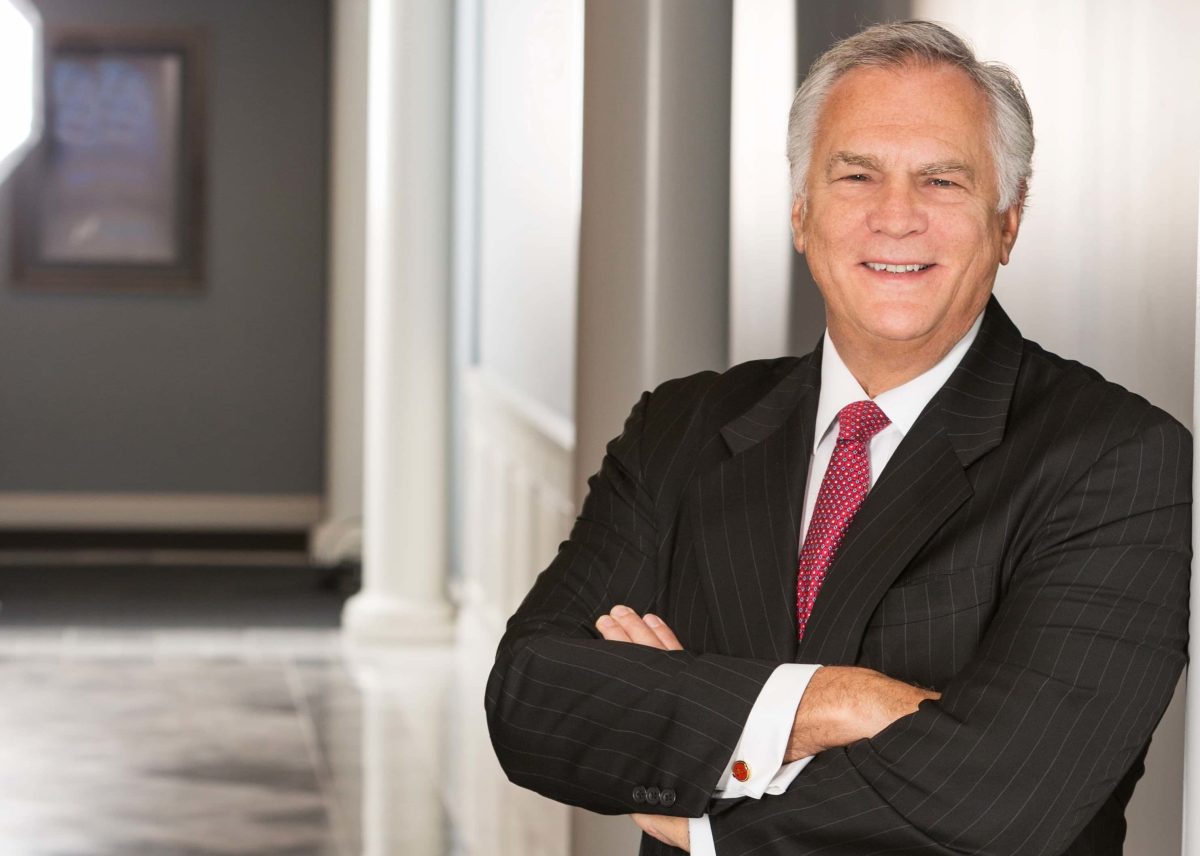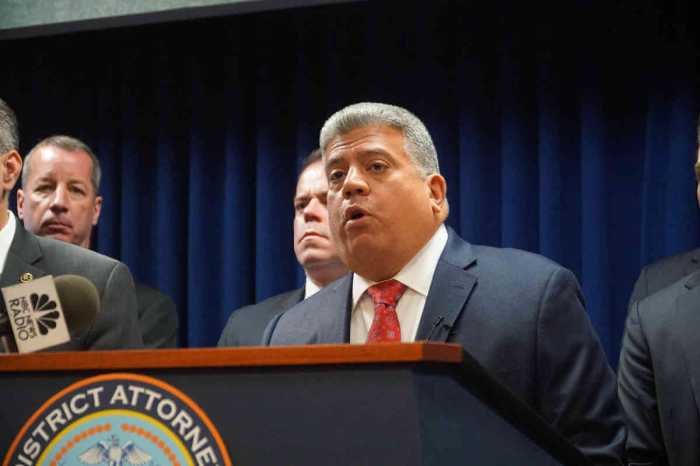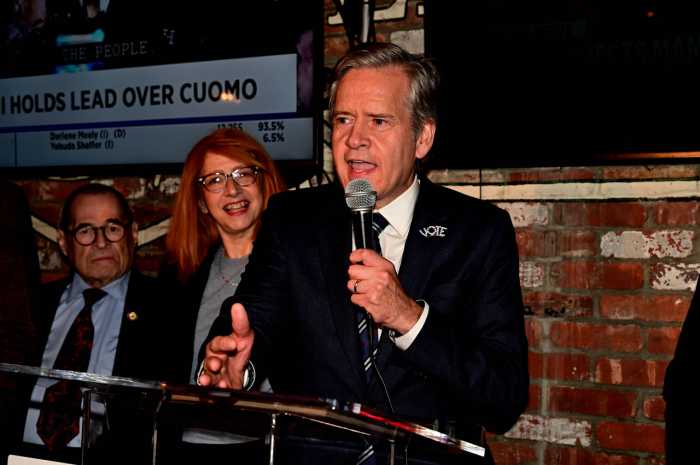In a blow to Borough President Marty Markowitz’s recommendation that
the Watchtower Bible and Tract society reduce its plans to build a multi-building
residential complex at 85 Jay St. by 60 percent, the City Planning Commission
voted on Monday to approve the religious organization’s application
for zoning changes.
With nine votes in favor of the slightly modified plans, and only two
in opposition — from Brooklyn Commissioner Dolly Williams, a Markowitz
appointee, and the Public Advocate’s appointee, Karen Phillips —
the commission only rejected an exemption of overall floor space to allow
for a 77,000-square-foot private parking garage. That means the Watchtower
Society must shave off 10 percent of the project’s total bulk to
accommodate the garage.
“The applicant reduced the scale on Bridge Street as it abuts the
Vinegar Hill neighborhood, and made efforts to improve activity on all
sides of the project,” said the commission’s chairwoman, City
Planning Director Amanda Burden. “As a result, I feel the project
fits much better into the character of the neighborhood.”
Markowitz, who disapproved of the project on grounds that for its size,
it didn’t provide any benefit to the neighborhood, was not happy.
“I am disappointed by the City Planning Commission’s decision
to approve the proposal for the Watchtower project,” he said. “To
better serve the needs of the area, the applicants should reduce the entire
project and add a retail component.”
But unlike the residents of Vinegar Hill and DUMBO who balked at the commission’s
decision, and decided at a community meeting Monday night to unwaveringly
support Markowitz’s recommendations, City Council members Letitia
James and David Yassky were hesitant to criticize the modified plan this
week.
James said she was still hopeful that negotiations with the Watchtower
Bible & Tract Society — the corporate face of the Jehovah’s
Witnesses religious order — could result in compromise, and the reallocated
square footage could result in capping the buildings heights.
“My understanding is that it’s going to result in one tower
being lowered by four or five stories,” said James, who, despite
her staunch opposition to the project just weeks ago said this week she
wasn’t ready to rally the City Council zoning committee to disapprove
of the modified plan.
“Councilman Yassky and I are trying to get some further reductions
and some additional concessions for the community. We’re still in
negotiations,” she said.
Evan Thies, a spokesman for Yassky, said that as presented, the plans
didn’t earn his approval, but the changes were “a step in the
right direction.”
Richard Devine, a spokesman for the Watchtower Society, whose world headquarters
are at York and Adams streets in DUMBO, couldn’t say for sure where
the additional square footage would come from.
“We really don’t want to change the parking area,” he told
The Brooklyn Papers.
“It is likely we will cut down on the residential space and probably
the height of the buildings, too. We’ll just have to see what will
be the most likely scenario.”
The most recent changes in the Watchtower’s project involved shaving
down a14-story residential building at the corner of Front and Bridge
streets in Vinegar Hill to 12 stories.
The tallest tower, at 20 stories, on York Street at Jay Street, is still
set at 222 feet, adjacent to an 18-story tower and a 2,500-seat assembly
hall. Another one, at 16 stories, would still tower over the lower-rise
12-story warehouse district at Jay and Front streets.
In the appeal to City Planning, the Watchtower Society also modified courtyard
regulations to “permit courts with a width of less than 40 feet,”
but “no less than 20 feet wide.”
The small green spaces have thus far been the only public access offered
in the plan, and are entranceways to the building complex. The Watchtower
Society has promised they would be open during daytime hours.
According to the community members who showed up for an informational
session held by members of the DUMBO and Vinegar Hill neighborhood associations
on Monday night, a courtyard wasn’t going to cut it.
Nancy Webster, president of the DUMBO Neighborhood Association, told the
20 or so residents who turned out that the next step was to appeal to
the council members and the zoning subcommittee.
“The way you deal with the zoning subcommittee is you have David
[Yassky] and Tish [James] on your side,” she said. Councilman Tony
Avella, the council’s zoning chairman, was very receptive during
their recent efforts to block plans for a tower at 38 Water St., said
Webster, and she hoped he would be similarly responsive on this case.
Webster added that although she thought retail and community access were
important to emphasize, it was critical to stand behind Markowitz’s
recommendations to halve the 1,100-space parking lot, which would only
be accessible to Watchtower residents and visitors, and limit buildings
throughout the project to 70 feet, except those along Jay Street, which
would be capped at 120 feet under the borough president’s recommendation.
Webster said she feared that if they pushed for unrealistic public amenities,
the Watchtower Society might pull the project altogether.
Based on rumors she said were circulating, the alternative to the towers
threatened by the society was a six- or eight-story parking garage so
the Jehovah’s Witnesses could move their cars quickly from their
lot at Pier 5, which is slated for use in the Brooklyn Bridge Park.
Nicholas Evans-Cato, president of the Vinegar Hill Neighborhood Association,
said he wasn’t worried.
“My personal position would be that it’s a bluff,” he said.
A Watchtower spokesman could not be reached by press time to comment on
the alleged threat.
A resident on Front Street, whose condominium apartment would face the
complex, said she was worried just as much about what was underground.
“With that many people in this space how much pressure or strain
will it create on existing conduits that are there?” asked Violet
Matovich, speaking of road congestion and underground water and sewage
systems. “And who pays for all the infrastructure work?”
Nobody had an answer for her.


